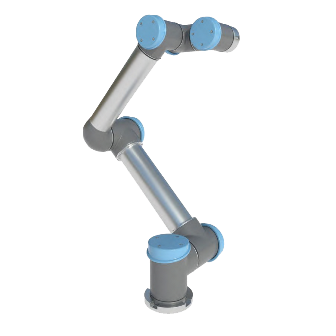In the past, automating production processes meant eliminating or significantly reducing human involvement with manufacturing. This was in part due to the goal of optimizing manufacturing, but also in part due to the fact that major machinery like industrial robots needed to be kept away from humans while operating. Robotic automation has been very beneficial to manufacturing, the only issue is not every manufacturing process has been a good fit for industrial robot manipulators. With the development of collaborative robots, an alternative to robotic automation has emerged and that is collaborative automation.
Collaborative Automation
Collaborative automation allows for the automation of production processes without eliminating human involvement. It is ideal for manufacturing processes that could not be automated by industrial robots because they still required some level of human interaction. Collaborative automation fills in the gaps of traditional robotic automation. Operations in which only a portion can be completed by industrial robot arms, those with frequent changeovers, or those with low production volumes and a high mix of parts are ideal for collaborative automation. With collaborative automation humans and robotic manipulators work together on production related tasks.Traditional Robotic Automation
Traditional robotic automation involves programming factory robots to automatically perform specific tasks in order to minimize or eliminate human involvement. Fully automated processes run solely on articulated robots while semi-automated processes may require a human operator to load or remove parts or operate the robotic workcell. Robotic automation is ideal for repetitive or dangerous tasks. These types of jobs are typically undesirable to workers so automating them with the FANUC Arcmate 100ic/6L and other industrial robot arms is advantageous for both workers and employers.Key Differences
- • Robots Used - One of the biggest differences between collaborative and robotic automation is the types of robots used. With collaborative automation only cobots or collaborative robots are used. The Universal UR10 and other cobots are designed with several safety features which allow them to interact with humans with minimal risk. For robotic automation, traditional industrial robotic arms are used. These include articulated, delta, gantry, and SCARA robots.
- • Human Involvement - Collaborative automation allows for human involvement. The FANUC CR-15ia can directly assist workers with manufacturing processes. Cobots may also be assigned one portion of a production process while workers focus on more critical thinking portions of a production. Robotic automation involves minimal human interaction as the main goal is to eliminate it as much as possible. With traditional automation six axis robots and humans never work collaboratively. If there is human involvement it usually consists of operating the manufacturing robot arm or loading/unloading parts from its workspace.
- • Safety Equipment - Cobots are built with safety features such as sensors, force limitation, and rounded exteriors. They are also small and light weight. With their design and built-in safety features they do not require traditional safeguarding. Traditional robots, however, require safety equipment such as barriers, area scanners, and light curtains to close off their work area and ensure they are not a threat to workers.
- • Applications - Collaborative and robotic automation can be used for many of the same types of applications. The main differences come down to the specifics of the application. Cobots are more limited in their operation since most have shorter reaches and lighter payloads. Traditional industrial robots can automate a wider variety of processes due to their various payload and reach capabilities.
Robots Done Right is the place to start when it comes to used robots. Contact us if you are interested in buying or selling your used robot.
